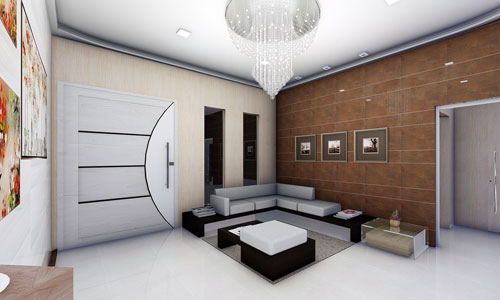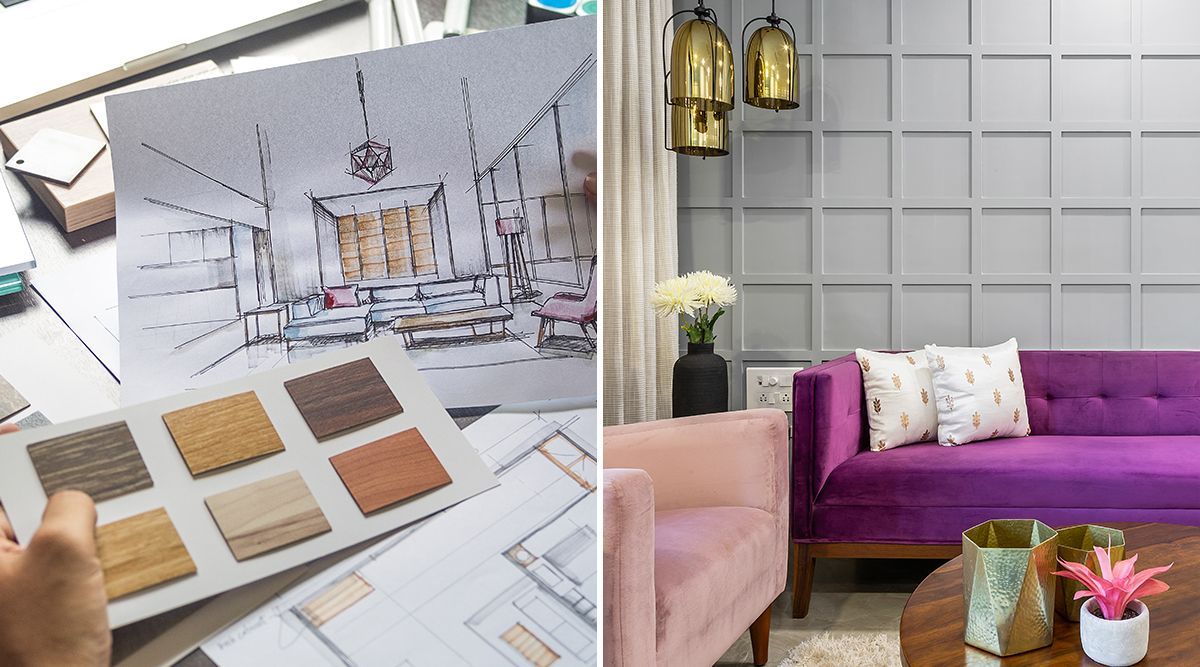Elegant Country Home Design for Modern Living
Elegant Country Home Design for Modern Living
Blog Article
Optimizing Visual Appeal: The Harmony In Between Interior Design and Home Designer Techniques
Understanding the refined interaction between interior decoration and home design can dramatically raise the visual allure of a space. This marital relationship of design self-controls involves a thoughtful integration of building components with indoor designs, and a skilled application of concepts such as comparison, equilibrium, and rhythm. As we explore this synergy, we will reveal ways to produce practical and visually striking environments that not only mirror personal design, but also adapt to the dynamic needs of contemporary living.
Comprehending the Fundamentals: Defining Interior Design and Home Style
Indoor layout and home architecture, typically linked, stand for the aesthetic and structural aspects of our living spaces. Inside style is a diverse self-control that entails creating practical, safe, and aesthetically pleasing spaces inside a building. On the other hand, home design mainly concentrates on the strong structure of a building.
The Harmony Discussed: Exactly How Indoor Style and Home Style Intersect
Understanding the synergy between interior decoration and home architecture can unlock a world of creativity and performance. The impact of architecture on interiors is a vital element to consider when discussing this intersection - Luxury home architect. This discussion will concentrate on the unifying style concepts that blend these two areas into a harmonious whole
Unifying Style Principles
While it might appear that interior style and home design are two unique techniques, they are really deeply interconnected, forming a synergy that is crucial for creating unified space. Unifying layout concepts are the columns that facilitate this symbiosis. The concepts consist of equilibrium, rhythm, harmony, contrast, and emphasis. These components coalesce to offer a cohesive visual charm. Equilibrium creates a sense of security, rhythm gives a sense of movement, harmony makes certain unity, contrast stimulates rate of interest, and focus accentuates crucial elements. The calculated application of these concepts allows a smooth mix of aesthetic appeals and feature, improving the total experience of the room. Basically, these principles serve as the bridge, unifying indoor layout and building practices.
Architectural Influence on Interiors
When one thinks about the architectural influence on interiors,The intertwining of indoor layout and style comes to be also much more obvious. Building aspects are inherent to a room's capability and aesthetic appeals, shaping the layout from the beginning. Columns, arcs, staircases or light beams, for example, offer both attractive and architectural functions. They can separate areas, produce focal points or imbue a space with a details vibe. Consideration of light, structure, and percentage likewise stem from building influences. Ultimately, style mold and mildews the canvas whereupon interior designers work. Their synergy is thus obvious: design establishes the framework, which interior decoration boosts with color, decoration, and appearance. This symbiotic connection ensures a harmonious balance in between function and charm, enhancing the aesthetic appeal of any type of area.
Key Principles in Balancing Interior Design and Home Design
Striking an equilibrium in between functionality and looks is a basic facet of integrating indoor layout and home design. An equally crucial principle is the assimilation of lasting layout to create eco-friendly and energy-efficient homes. Understanding and discovering numerous building styles can also play a vital role in achieving an unified layout. Luxury home architect.

Stabilizing Performance and Aesthetics
Stabilizing performance and aesthetic appeals in indoor style and home design becomes one of the critical concepts to consider. This delicate equilibrium needs a thorough blend of usefulness and allure, intending to create spaces that are not only aesthetically pleasing yet also offer their intended purpose effectively. Aesthetics uplifts the mood and influences the assumption of space, whereas functionality guarantees functionality and convenience. Trick to this balance is a thoughtful choice of components such as appearance, shade, and illumination, which should complement each other while serving their individual roles. Similarly crucial is the efficient arrangement of the space, with a well-planned format adding significantly to the harmony in between capability and aesthetics. This harmonious blend ultimately boosts the high quality of life for the passengers.
Lasting Design Assimilation
In maintaining the equilibrium between performance and aesthetics, one should likewise think about the combination of lasting style principles. This method not only improves the visual appeal of a space but additionally guarantees its long life and lowered ecological effect. A harmonious combination of indoor layout and home style, assisted by sustainability, can create rooms that are attractive, useful, and environmentally friendly.
Exploring Building Designs
While there are a huge selection of architectural styles to explore, it is vital to recognize that every one carries its distinct principles that can dramatically affect the harmonization of interior layout and home design. These designs, ranging from the luxuriant Baroque to the minimal Modernist, bring unique approaches and aesthetic appeals that, when correctly comprehended and used, can produce try this web-site homes that are not only aesthetically sensational but additionally harmoniously incorporated in terms of layout and design. Selecting a building style is not simply about individual aesthetic choice; it is regarding choosing a design language that talks to the house owner's lifestyle, ideology, look what i found and goals, creating a home that is a real reflection of its citizens.
Case Researches: Remarkable Instances of Design and Style Synergy
Looking into some extraordinary instance studies provides an extensive understanding of just how design and design can sympathetically merge to develop useful and engaging spaces. The famous Fallingwater home, designed by Frank Lloyd Wright, exceptionally shows this harmony. Wright's layout masterfully integrates your home with its surrounding landscape, while the indoor mirrors the outside's natural forms. One more instance is the minimalistic Tadao Ando's Church of Light in Japan. The architect accomplished an excellent equilibrium between simplicity and dramatization, using raw concrete and light. Internally, the plain, marginal layout develops a sense of tranquility and spiritual consideration. These instances show the value of harmony in between interior style and style in attaining functional and visual success.
Practical Tips: Enhancing Your Home's Aesthetic Charm
Attracting inspiration from the study of building and layout harmony, home owners also can carry out some functional methods to increase their home's aesthetic allure. An unified blend of shades, appearances, and illumination can improve a space, developing a cozy and inviting ambience. Choosing for furnishings that enhances the building elements of your home can promote a sense of unity. Wall surface art and design pieces can include character, showing personal design and preference. Including greenery, either via interior plants or sights to the outdoors, can bring an element of nature, delivering a relaxing effect. Clever usage of mirrors can open up an area, giving an impression of a larger location. Inevitably, the aesthetic allure depends on balancing performance with design, producing a home that is both comfortable and lovely.

Future Fads: Exactly How Modern Techniques Are Altering Interior Design and Style
As the world evolves, so do the fads in indoor style and architecture. Modern strategies are progressively focusing on sustainability, integrating energy-efficient designs and environmentally friendly materials. Modern technology plays a crucial function, with smart homes becoming the norm, integrating AI and IoT for improved capability. Additionally, minimalism remains to gain traction, stressing simpleness, performance, and clutter-free rooms. This is typically coupled with biophilic style, attracting inspiration from see here nature and advertising wellbeing. The pandemic has increased the need for adaptable, multi-purpose spaces, obscuring the lines in between job and home. These trends mirror a shift towards layouts that are not just visually pleasing, but additionally environmentally mindful, technologically advanced, and versatile to transforming way of livings.
Conclusion
To conclude, the assimilation of interior decoration and home architecture techniques is a vibrant strategy to boosting visual charm. By leveraging key principles like equilibrium, comparison, and rhythm, and integrating aspects of modern living, developers can produce flexible, visually pleasing settings. With recognizing this harmony, property owners can make informed decisions that not only boost their home but additionally add to their total wellness.
Understanding the refined interplay in between interior style and home architecture can significantly raise the aesthetic allure of a living area.Indoor style and home architecture, typically linked, represent the structural and visual aspects of our living rooms.While it may appear that interior layout and home design are 2 distinct techniques, they are actually deeply interconnected, developing a synergy that is essential for developing harmonious living areas.The intertwining of indoor style and design comes to be also extra evident when one considers the building influence on interiors. An unified fusion of interior design and home design, led by sustainability, can produce rooms that are gorgeous, useful, and environmentally friendly.
Report this page